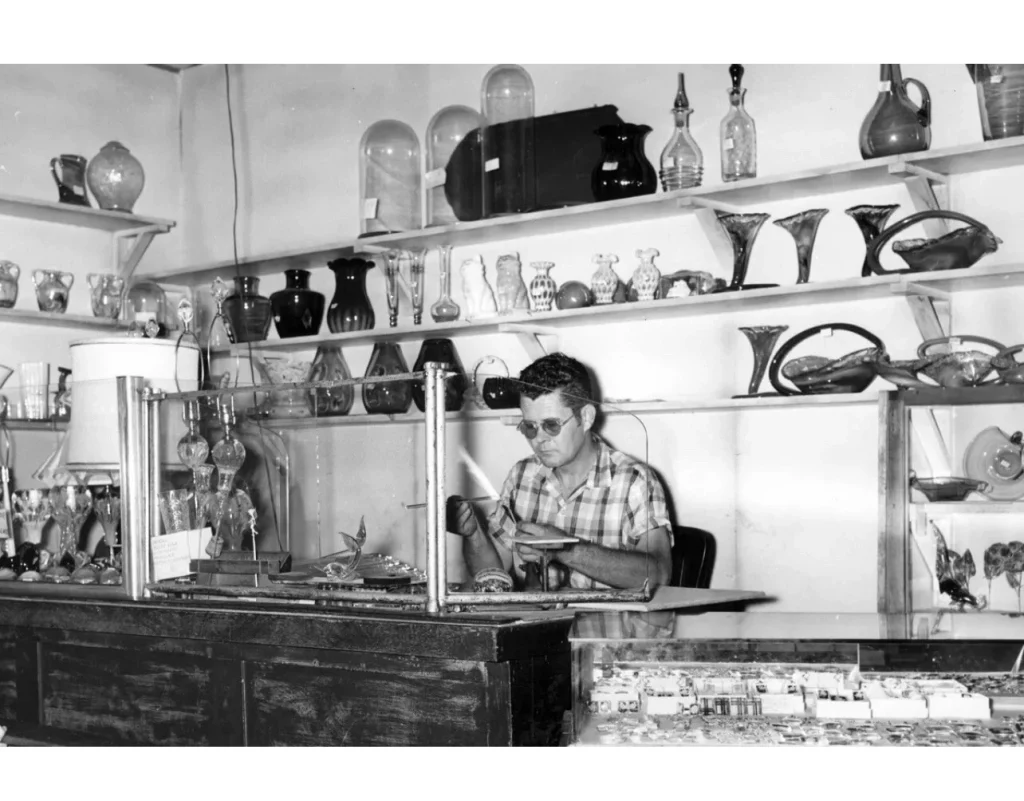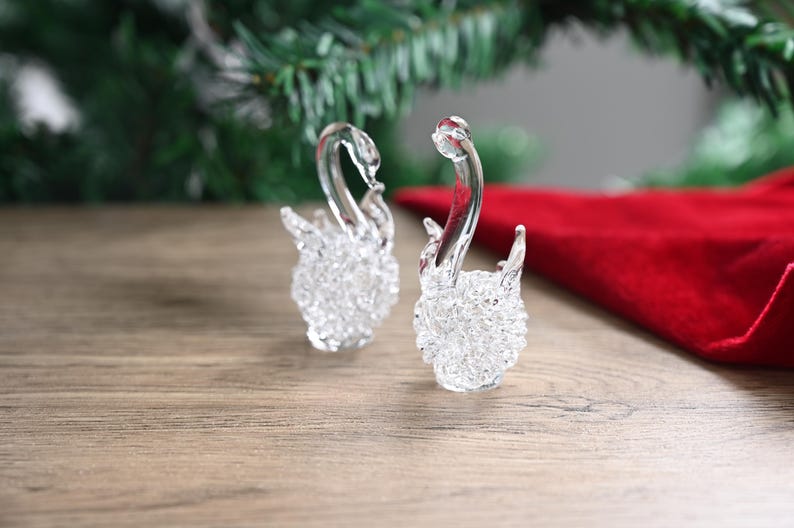The other day I was thinking about glass (like I often do), and I started wondering when I first fell in love with it. Not just liked it, loved it. For me, it all started when I was a kid at an amusement park called Knott’s Berry Farm.

A store with Light and Fire
I can still picture it perfectly. There was a little shop with a counter, and behind it sat a glass artist (Richard J. Rasmussen, in the image above) working at his torch. The bright blue flame was steady and calm, even with all the chatter and movement around him.
Rods of clear glass were lined up in neat rows like magic wands waiting their turn.
I remember standing behind the clear shield in the picture above, barely tall enough to see over the counter, completely still as he picked up a rod and turned it in the fire. The tip began to glow orange, then white, softening like taffy. Slowly, it stretched and curved under his hands.
Before my eyes, that glowing thread became the tail of a horse… the curve of a dolphin… the wings of a tiny bird. Each twist of his wrist shaped something new and impossible, clear as water, delicate as breath.
It was mesmerizing.
It still is.
The Art Form
It was difficult finding the correct name for this type of Glass Art. I found names like lace glass, spun glass, clear glass figurines, and torchworking. I even found places where it was called blown glass even though blowing was not involved.
I think the form is very similar to what we call lampwork today only made with mostly from clear glass.
The best visual match to what I remember is on ETSY by samshandcrafty. Click on the image to get to the swan listing (I am not affiliated with the artist).
A Moment Suspended
What fascinated me most wasn’t just the finished piece, those fragile, shimmering animals, but the transformation itself. One moment, it was a plain glass rod. The next, it was alive in the flame, moving and forming with the artist’s hands.
Even as a child, I understood that what I was seeing was not a trick. There was a rhythm to it, patience, control, and focus in every motion. People in the crowd would move in and out of the viewing area, but I stayed there, fascinated by the flame and the glass. I didn’t know it then, but that same fascination, the pull to create something beautiful out of heat and chaos, would find its way back to me years later.
The Spark That Stayed (and Grew)
It’s funny how those early sparks of creativity hang around. Life goes on, school, work, family, and the memory gets tucked away for a while. But then, out of nowhere, something stirs it awake.
For me, it was the first time I went with Tanya to a beginner’s lampworking class. The moment I saw the torch ignite, that same sense of awe came rushing back — the quiet, the focus, the magic.
I was also a little terrified I’d drop a blob of molten glass in my lap (I’m a bit of a klutz, so it was a legitimate concern). But the excitement won out. I couldn’t wait to try it.
And I’m so glad I did.
The Vanishing Art of the Amusement Park Flame
You don’t see those little glass figurine shops at fairs or amusement parks anymore.
Maybe it’s the insurance. Maybe it’s just the times changing. But there was something special about standing there, watching a simple rod of glass turn into a living creature under the artist’s hands, the crowd leaning in, the air warm from the torch, the quiet concentration of someone lost in their craft.
It felt personal. Magical.
This particular style of glasswork might be fading, but other forms of glass art are still alive and thriving, and many studios offer classes where you can watch, learn, and even try it yourself. If you ever get the chance, go.
Glass doesn’t just catch the light — it holds memories, too.
-Rose G


